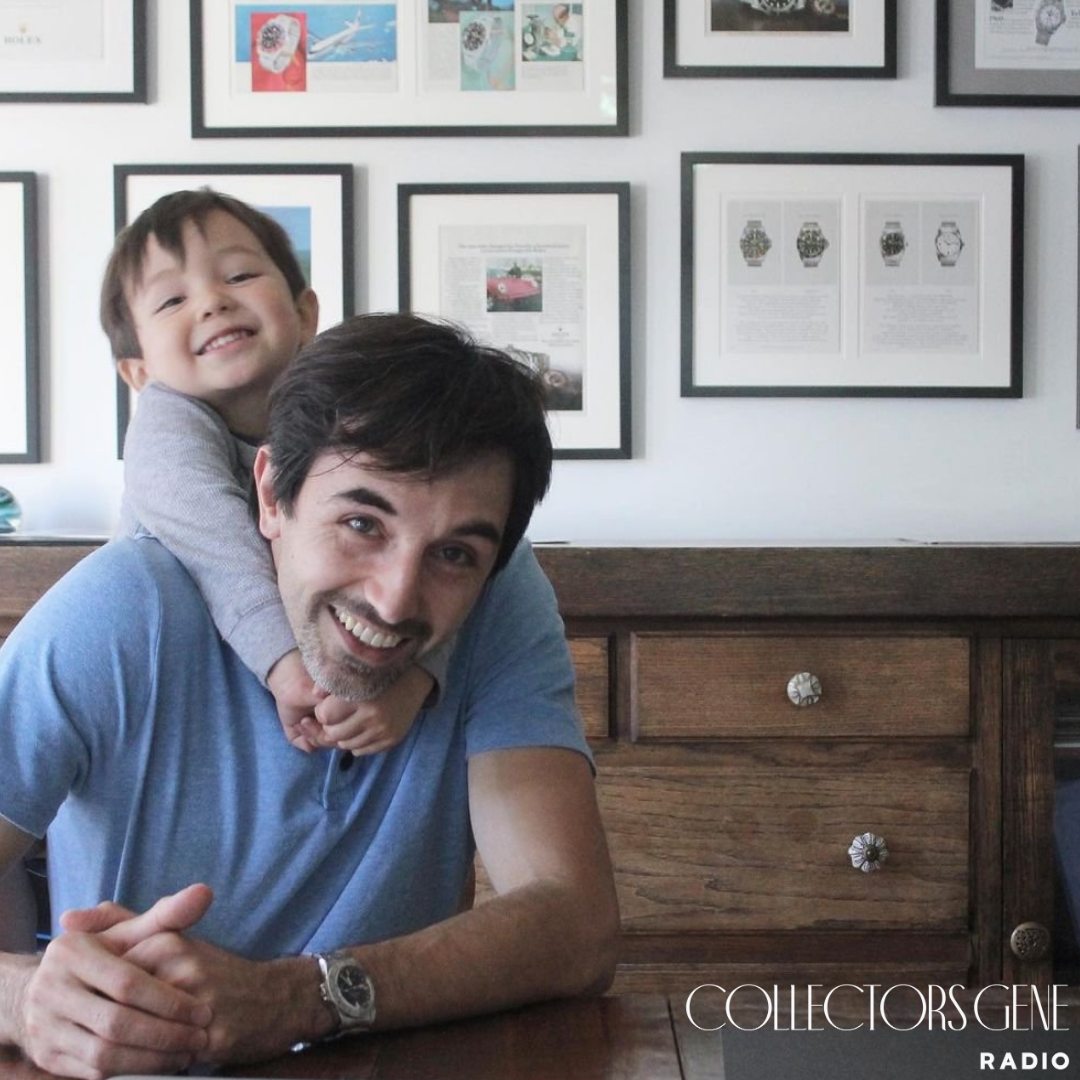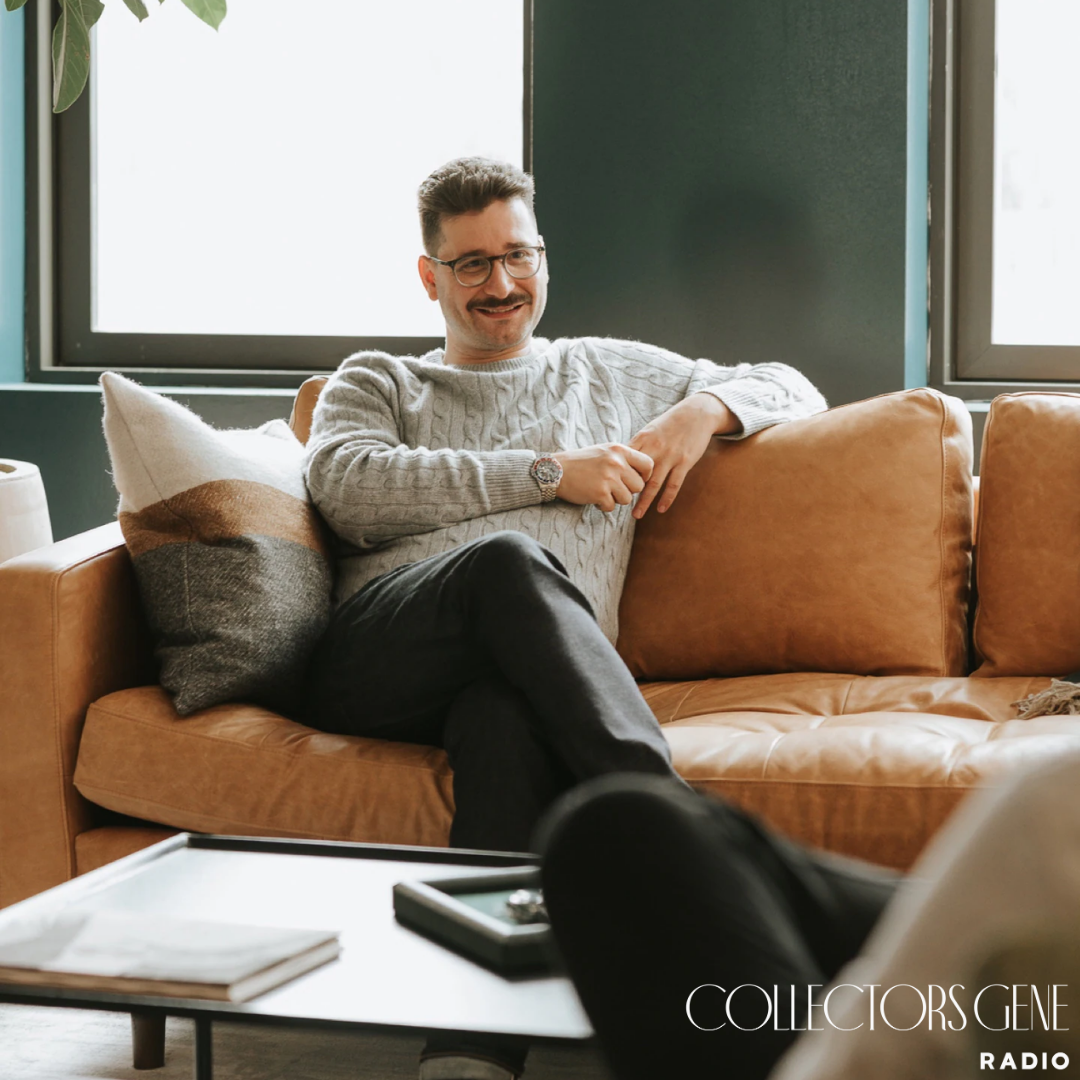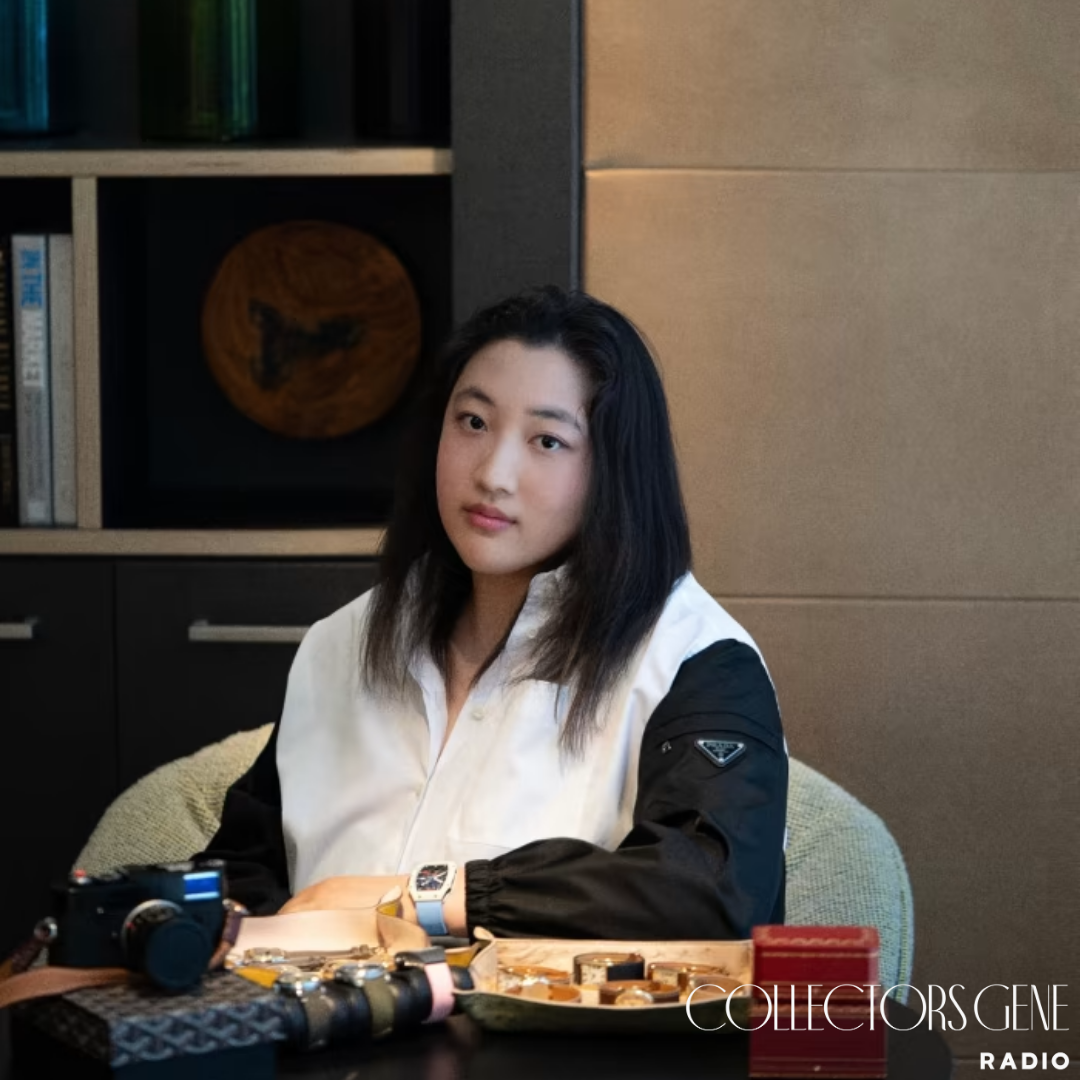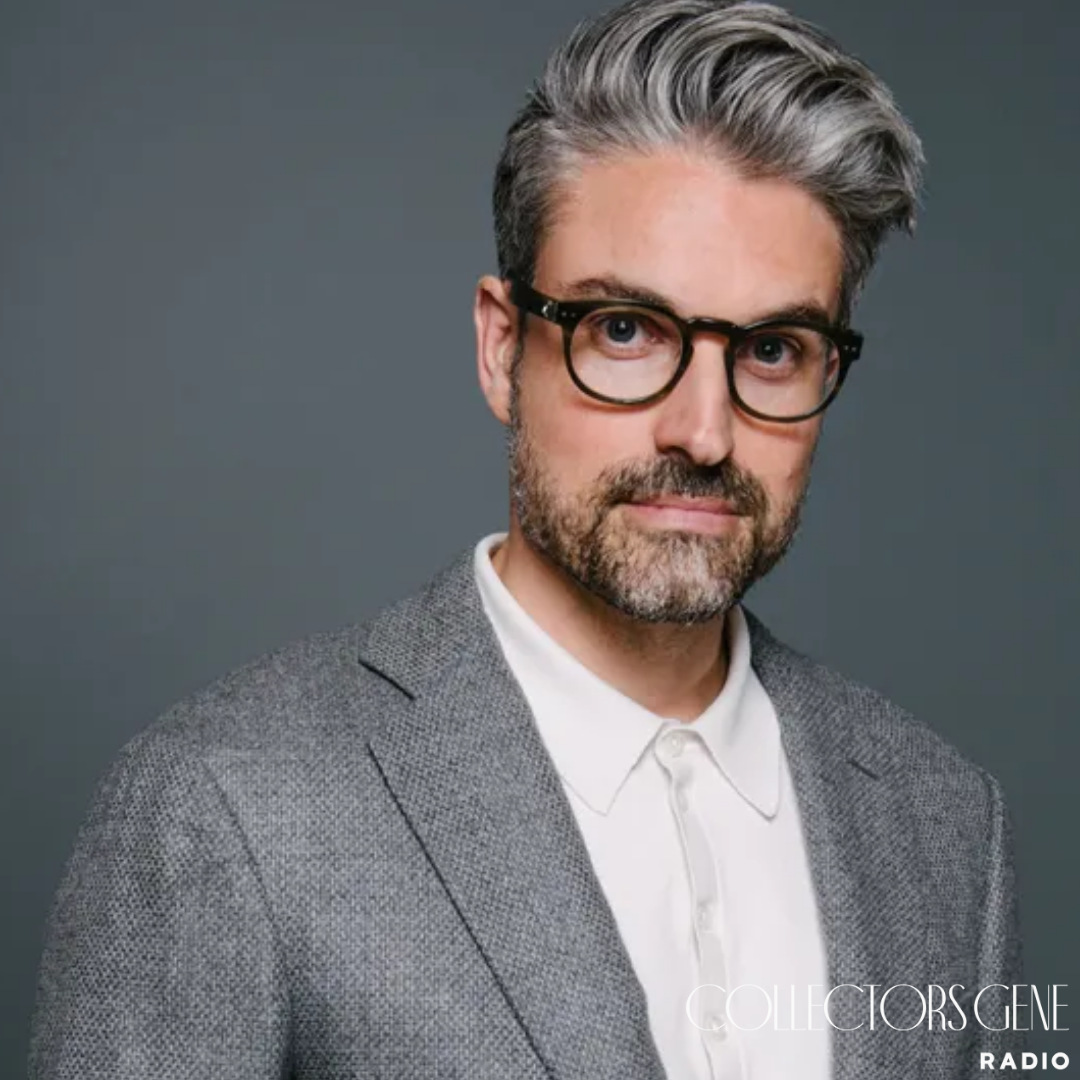When I first stumbled upon Nick Federowicz’s work, I knew this was going to be a different kind of collecting story. Nick is the founder of Ad Patina, a business devoted to sourcing, archiving, and framing vintage print advertisements for watches, cars, furniture, and other icons of design. On the surface, it sounds niche, but the deeper you go, the more you realize these ads are living artifacts, often just as evocative as the objects themselves.
I’ve followed Nick’s journey for years, watching him turn a personal fascination into a full-fledged business and archive. What I love about his approach is that it proves collecting doesn’t always have to focus on the object itself. Sometimes, the culture that surrounded it like the way it was shown, sold, and framed in the public imagination can carry equal weight.
Where It All Began
Nick’s watch story goes back to 1998. In high school, he worked a minimum-wage job, saved his paychecks, and finally bought a Rolex Datejust on a class trip to Paris. That decision didn’t come from handling dozens of watches or comparing references online. It came from the ads he had absorbed as a kid in waiting rooms. Rolex on Everest. Rolex with Jacques Piccard in the Mariana Trench. Rolex on the wrists of surgeons and pilots. Those images stayed with him.
What’s poetic is that the very ads that planted the seed for his first watch eventually became the collectibles he would chase down later. He’s proof that the stories we encounter when we’re young often shape the way we collect as adults.
From Watches to Ads
Like many collectors, Nick wanted more watches. But the market shifted, dealers had the advantage, and the chase lost some of its fun. Instead of burning out, he pivoted back to the ads themselves. If he couldn’t own every watch he admired, why not collect the very materials that shaped his passion in the first place?
What surprised him is that hunting ads required just as much skill. Scouring old magazines, digging through bins at flea markets, scrolling endless eBay listings, it scratched the same itch. When he finally landed something like a 1967 Daytona ad showing a driver gripping the wheel, the thrill was every bit as real as finding the watch itself.
Building Ad Patina
Ad Patina started as Nick’s personal archive. But friends and fellow collectors began asking if he would sell. At first, he hesitated. What if he couldn’t find another example? Then he realized the joy was in the hunt, not just the ownership. Letting one go created the excuse to chase the next.
That realization turned into a business. Today, Ad Patina is part gallery, part archive, part dealer. Nick treats condition with the same seriousness as watch collectors treat case polish or dial patina. He uses archival materials for framing, sometimes even scrapping rare ads when the alignment isn’t perfect. He admits to crumpling a two-page Datograph spread after botching the archival tape join. Painful, but it shows the level of care he brings to each piece.
Pricing has been its own challenge. Watches have decades of auction data. Ads don’t. Nick has essentially built the market himself, with pieces ranging from $45 to nearly $1,000. And people are buying. For some, it’s the closest connection to a watch they’ll never own. For others, it’s the thrill of hanging a slice of history on the wall.
More Than Watches
While Ad Patina started with watches, it has expanded into Porsche and Land Rover ads, travel posters, fashion spreads, even a 1969 Eames chair advertisement. One of Nick’s personal favorites is a Cartier Panther ad from the 1990s. To his kids, it’s just a cool image of a panther staring through a window. To him, it’s layered, Cartier, pop culture, family memory, all rolled into one.
What excites Nick now is digging deeper into the history of these ads. Who shot the photos? Which agencies designed them? What context shaped the imagery? Just as collectors obsess over watch references, he wants to build scholarship around the ads themselves. In that way, he’s not just collecting paper but he’s archiving culture.
Thoughts on Modern Advertising
When I asked about advertising today, Nick didn’t mince words. Most modern ads, he says, feel sterile. They look like resized product shots, stripped of narrative. The vintage ones told stories like Rolex on Everest, Porsche at Le Mans, Eames chairs in a living room that looked like the future. They were aspirational, but they were also human.
The best modern campaigns, in his view, are the ones that borrow from history. Rolex’s Daytona ads built around archival photos of Jackie Stewart work precisely because they connect product and story. Gucci and Louis Vuitton have pulled this off too, hiring top photographers to create narrative-driven spreads. But for the most part, vintage still has the edge. Vintage ads make you stop, look, and imagine.
The Collectors Gene Rundown
The One That Got Away: A Tiffany-signed Rolex Daytona 6265 for $7,000 in 2014. Unpolished, box and papers, perfect condition. He second-guessed the pushers and walked away. He still keeps the jeweler’s email.
The On Deck Circle: A Cartier Tank. He’s reading Francesca Cartier Brickell’s The Cartiers and wants to do his homework before making the move.
The Unobtainable: A fresh-to-market Paul Newman Daytona 6239 with a white dial and box and papers. He handled one at auction in Chicago but the price was already beyond reach.
The Page One Re-Write: If not ads and watches, it would be vintage LEGO sets. He and his kids have built plenty, and he wishes he had been stashing sealed boxes decades ago.
The GOAT: Friends like Justin Vrakas, Andrew and Rob Staky (a previous guest of the show). Collectors he admires for their taste, transparency, and willingness to share.
The Hunt or The Ownership: It’s equal for Nick. The emails, the late-night bidding wars, the parking lot handoffs, they’re as fun as the moment a framed ad finally goes on the wall.
Do You Feel That You Were Born With The Collector’s Gene?: Yes. He grew up surrounded by it through his father and admits the impulse to want “more” is hardwired. But for him, it’s about sharing. His kids see it, his wife enjoys it, his friends come over and experience it. Collecting, at its best, is about community.
Closing Thoughts
My conversation with Nick Federowicz was a reminder that collecting doesn’t always have to be about the object itself. Sometimes, it’s about the materials that shaped how those objects were perceived in the first place. A framed advertisement can carry as much emotional weight as the watch it once promoted.
Nick proves that overlooked ephemera can be just as powerful as the grails we chase. By archiving these ads and giving them a second life, he’s preserving not just history but the stories that shaped our passions in the first place. And in a world where collecting often gets reduced to auctions and hype cycles, that perspective feels refreshing.





